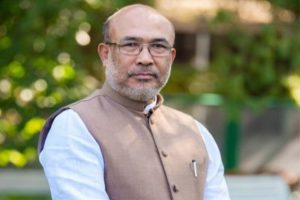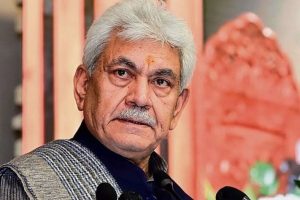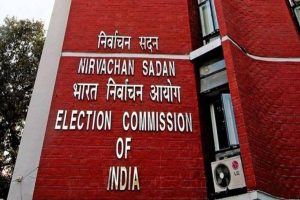Tracing the history of Nepali writers writing in English is difficult, but a tentative beginning can be identified. Sangita Swechcha writes, “Padma Jung Bahadur Rana’s Life of Maharaja Sir Jung Bahadur of Nepal, a biography in English of the first Rana prime minister, made the solid path for coming generations to venture into English.”
A date cannot be established because authors may write in English sporadically and never come into notice. This changed only after the publication of Manjushree Thapa’s Mustang Bhot in Fragments (1992) or The Tutor of History (2001) or Samrat Upadhyay’s Arresting God in Kathmandu (2001), an anthology of short stories.
Giving the keynote speech at the Nepalese English Writers’ Conference organised by Village of English Writers (VIEW) in Chitwan, Ammar Raj Joshi, vice-chancellor of Mid-Western University and a scholar of English, said, “What should be the right category for writings in English originally written by Nepali writers? Should it be Nepali writers in English, Nepalese writing in English or English written by Nepali writers?” Subsequent speakers said that their works could be put under any category, but what is more important is the emerging situation of Nepali English writing and its global reach.
International attention
The publication of Thapa and Upadhyay’s books seem to have declared the entry of Nepali writers writing in English. In a review of Mustang Bhot in Fragments published in The Rising Nepal, Durga Prasad Bhandari highlighted the advent of an excellent English writer in the Nepali literary scene (Swechcha, 2019). When Samrat Upadhyay came out with his first book, Arresting God in Kathmandu, it garnered good reviews and accolades. According to Amish Raj Mulmi, “Although literature in Nepal has a long history, Nepali writing in English (NWE) only caught international attention in the early 2000s, after the publication of Manjushree Thapa’s The Tutor of History and Samrat Upadhyay’s Arresting God in Kathmandu.”
According to Padma Prasad Devkota, the youngest son of Laxmi Prasad Devkota, Nepalis writing in English can be noticed in Laxmi Prasad Devkota’s two works in English: Bapu and Other Sonnets and Shakuntala, which were originally written in English during the 1950s. According to Min Pun, “After Laxmi Prasad Devkota pioneered Nepali writing in English in the 1950s, Mani Dixit, Tek Bahadur Karki, Abhi Subedi, Padma Prasad Devkota, DB Gurung, Laxmi Devi Rajbhandari, Peter J Karthak, Rishikesh Upadhyaya and a few others continued to write in English from the 1960s to the 1980s.”
Currently, we have many writers writing in English, and the publication of La.Lit, a literary magazine edited by Rabi Thapa, has contributed much to Nepalis writing in English. Mulmi writes, “Indian publishers such as Speaking Tiger are commissioning new works, and publications like La.Lit and The Record are doing all they can to encourage Nepali writing in English.”
The recent publications of Nepali writing in English by younger writers seem to contribute to Nepalis writing in English. Some examples could be Rabi Thapa’s short story collection Nothing to Declare and his non-fiction Thamel: Dark Star of Kathmandu, Prawin Adhikari’s The Vanishing Act, Pranaya Rana’s City of Dreams, Shraddha Ghale’s The Wayward Daughter, and Greta Rana’s Hostage that have been received exceptionally well. On top of that, Prajwal Parajuly’s Land Where I Flee (2014) and Niranjan Kunwar’s Between Queens and the Cities (2021) have received excellent feedback. Between Queens and the Cities, a book of non-fiction, has been able to bring the marginalised voice of a Nepali gay man, a new and fresh perspective, into play.
Such emerging Nepali writers in English will help literature to cross linguistic, cultural and geographical boundaries and allow Nepali writings to enter the canons of Nepalis writing in English. Sahitya Post (2020) writes, “Along with the proliferation in its theme and style, Nepali literature is written in either language also has multifaceted objectives in its creation. Issues of ethnicity, socio-cultural structures, identity, roots and diaspora have become the mainstream.”
Wider audience
The emerging writers in English must be cognisant of the critics while writing in English and help Nepali English travel across the world and enter the canons of Nepali writing in English. In an interview by Tom Robertson, Ramesh Shrestha says, “If Indian English is acceptable, then why isn’t Nepali English, Nigerian English or Singaporean English?”
This shows that we should let Nepali English writing reach out to a wider audience, whether that be original writing in English or Nepali translated into English. Without being exotic, we must be honest in writing to bring in unique and innovative content that carries original sensibilities and idiosyncrasies that audiences in the global market are looking for. Talking about the emerging Nepali writers in English, the best English translations of the best Nepali writings are also equally important, and this will help literature to cross linguistic, cultural and geographical boundaries.











